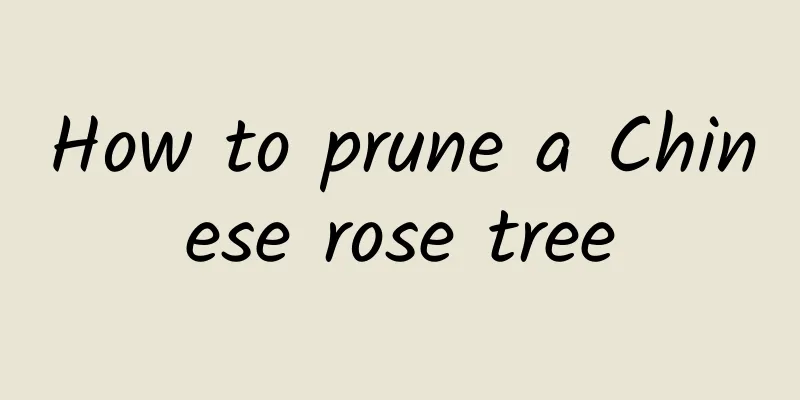How to prune a Chinese rose tree

When is the best time to prune a rose tree?Rose trees can be pruned all year round. Generally speaking, the best pruning time for roses is in May, June and August each year. You can choose the appropriate pruning time according to the growth status of the roses. Spring pruning: The specific time is from May to June. The main purpose is to prune the withered flowers. The vigorously growing branches should retain 3-4 buds. The weaker branches can retain 1-2 buds. Summer pruning: The specific time is June to July. At this time, the overgrown branches and leaves should be pruned in time to prevent them from competing for nutrients with other healthy branches. The pruning should not be too large to retain the original shape. Autumn pruning: The specific time is around August. Prune the branches that grow vigorously during the growth period, especially some side branches. Keep 2-3 buds on each branch and prune the overall shape to make it have a certain ornamental value. Winter pruning: The specific time for winter pruning of roses is December. Prune the weak branches, some diseased branches and leaves, dry branches and leaves, old branches and leaves, and branches and leaves attacked by pests, so that they can revive healthily in the spring of the following year. Tips for pruning Chinese rose treesWhen the rose leaves fall, they should be pruned, leaving branches about 15 cm high. The pruning area is about 1 cm above the leaf buds extending outward, and the side branches, diseased branches and concentric branches are trimmed at the same time. After May, prune back 2/3 or 1/2 of the branch that has bloomed each time, so that there will be more opportunities for regeneration of flower buds. If you want the flowers to bloom larger, you can also pick off some of the flower buds when there are many of them. This can not only concentrate the nutrients, but also extend the flowering period and bloom in batches. Things to pay attention to when pruning Chinese rose treesPruning tools should be sharp and non-toxic. If you have pruned diseased leaves and branches, be sure to disinfect them again when you prune again. When pruning, be sure to prune above the branch nodes. Pruning too close to the nodes may damage the buds. The cuts should be cut at an angle so that they can slide off quickly when water droplets are accidentally stained during watering, avoiding water accumulation at the cut and blackening of the stems. For rose varieties that have several buds on one branch, if you want the flowers to bloom larger, you can leave only 1-2 buds on a branch and cut off the rest; as for those that have only one bud on a branch, you don't need to do this. |
<<: How long does it take for agave to adapt to the pot?
>>: The correct method and precautions for watering the palm tree
Recommend
How to care for the Dingdangjin succulent and what kind of soil is best for planting it
Dingdangjin is a red lotus bridal variety with lo...
What is the best fertilizer for watermelon?
Watermelon fertilization time Base fertilizer can...
When is the harvest of Job's tears?
Job's tears harvest time The crop of Job'...
How to cultivate pearl flower
1. Soil Potted plants require loose, fertile, san...
How many days is the growing period of summer peanuts? When is the latest time to sow summer peanuts?
The growth cycle of summer-sown peanuts is about ...
What are the cultivation methods and precautions of Chlorophytum?
Chlorophytum cultivation method Chlorophytum pref...
When does Phalaenopsis flower stem grow?
1. When does the foil grow? It usually grows a fl...
Ganoderma lucidum cultivation conditions and breeding environment
Introduction to Lingzhi Ganoderma lucidum is also...
How to grow blue star flowers
1. Breeding environment 1. Watering: The soil sho...
How and when to grow potatoes on the balcony How and when to grow potatoes on the balcony
It is good to grow potatoes on the balcony. The e...
When growing orchids in autumn, avoid these 4 "risks" to prevent yellowing leaves and root rot, and let the fragrance fill the garden!
The first risk: buying fake flowers Everyone may ...
When is the best time to plant pepper trees?
The Zanthoxylum bungeanum tree is a small deciduo...
Can grapefruit trees be planted in the yard?
Can I plant a grapefruit tree in my yard? Pomelo ...
How to make the red flower jade bloom
1. Soil Alkaline soil must be used for growing pl...
When and how to prune crape myrtle trees
Crape myrtle, also known as crape myrtle, is a de...









